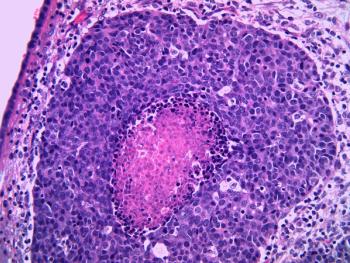
New Guidelines for Primary Prevention of Heart Disease with Aspirin
The US Preventive Services Task Force has critically evaluated the literature and provided recommendations regarding aspirin use for primary prevention of CVD and CRC.
Daily aspirin use has long been heralded for its cardioprotective effects, particularly in at-risk individuals, like those with diabetes. However, a significant amount of research published in the last 5 years has called into question the benefits of aspirin for primary prevention of cardiovascular disease (CVD).
Complicating this scenario is the emergence of a signal for reductions in colorectal cancer (CRC) risk with regular aspirin use. All of these recent developments have left many clinicians uncertain of how to advise patients on this issue, which is particularly relevant for pharmacists, as aspirin is available OTC.
Recently, the US Preventive Services Task Force (USPSTF) critically evaluated the literature and provided recommendations regarding
The USPSTF used a calculator derived from the American College of Cardiology (ACC) and American Heart Association (AHA) pooled cohort equations to predict 10-year risk for first hard atherosclerotic CVD event (defined as nonfatal myocardial infarction [MI], coronary heart disease [CHD] death, and fatal or nonfatal stroke). Although concerns have been raised about the equations’ potential to overpredict risk, they’re the only US-based, externally validated equations that report risk as a combination of cerebrovascular and CHD events.
Risk factors for gastrointestinal (GI) bleeding with aspirin use include higher dose and longer duration of use, history of GI ulcers or upper GI pain, bleeding disorders, renal failure, severe liver disease, and thrombocytopenia. Other factors that increase risk for GI or intracranial bleeding with low-dose aspirin use include concurrent anticoagulation or nonsteroidal anti-inflammatory drug use, uncontrolled hypertension, male sex, and older age.
This recommendation applies to adults at increased CVD risk and at average risk for CRC. Those at increased CVD risk who are known to be at increased risk for CRC (for example, individuals with a family or personal history of CRC or familial adenomatous polyposis) shouldn’t follow these guidelines and instead consult their physician for an individualized treatment plan.
Benefits of Aspirin Use
The USPSTF found adequate evidence that aspirin use to reduce risk for cardiovascular events (nonfatal MI and stroke) in adults aged 50 to 69 years at increased CVD risk is of moderate benefit. The magnitude of benefit varies by age and 10-year CVD risk.
The USPSTF found adequate evidence that aspirin use reduces the incidence of CRC in adults after 5 to 10 years of use. However, it found inadequate evidence that aspirin use reduces risk for CVD events in adults at increased CVD risk and those younger than 50 years or older than 69 years.
Harms of Aspirin Use
The USPSTF found adequate evidence that aspirin use in adults increases the risk for GI bleeding and hemorrhagic stroke. It determined that the harms vary but are small in adults aged 59 years or younger and small to moderate in adults aged 60 to 69 years.
The USPSTF found inadequate evidence to determine the harms of aspirin use in adults aged 70 years or older.
Conclusions
In adults aged 50 to 69 years at increased CVD risk, the benefits of aspirin use include prevention of MI and ischemic stroke and, with long-term use, reduced incidence of CRC. However, aspirin use may also result in small to moderate harms, including GI bleeding and hemorrhagic stroke.
The USPSTF concluded with moderate certainty that the benefit of aspirin use for the primary prevention of CVD events, combined with the reduced incidence of CRC, outweighs the increased risk for bleeding by a moderate amount in adults aged 50 to 59 years with a 10-year CVD risk of 10% or greater, and by a small amount in adults aged 60 to 69 years with a 10-year CVD risk of 10% or greater.
The USPSTF concluded that the evidence on aspirin use in adults younger than 50 years or older than 69 years is insufficient and the balance of benefits and harms can’t be determined.
The Bottom Line
If you’re a pharmacist practicing in a community setting and patients ask whether they should start a daily aspirin regimen, then sit down with them and make an individualized plan. The ACC/AHA risk calculator can be accessed online (cvriskcalculator.com) and is fairly easy to complete when patients know their blood pressure and cholesterol numbers.
If the patient falls within the aforementioned categories where aspirin would be recommended, then it would be prudent to advise in favor of such therapy. If the patient needs to see the physician for additional testing (eg, cholesterol panel or colonoscopy), then the pharmacist can suggest that the patient follow up with the additional testing and return to the pharmacy once all information has been gathered.
If the patient is either too young or too old, or he or she doesn’t have sufficient CVD risk, then the pharmacist should recommend against a daily aspirin regimen.
Reference
Bibbins-Domingo K; U.S. Preventive Services Task Force. Aspirin Use for the Primary Prevention of Cardiovascular Disease and Colorectal Cancer: U.S. Preventive Services Task Force Recommendation Statement. Ann Intern Med. 2016 Apr 12. doi: 10.7326/M16-0577. [Epub ahead of print]
Newsletter
Stay informed on drug updates, treatment guidelines, and pharmacy practice trends—subscribe to Pharmacy Times for weekly clinical insights.

















































































































































































































